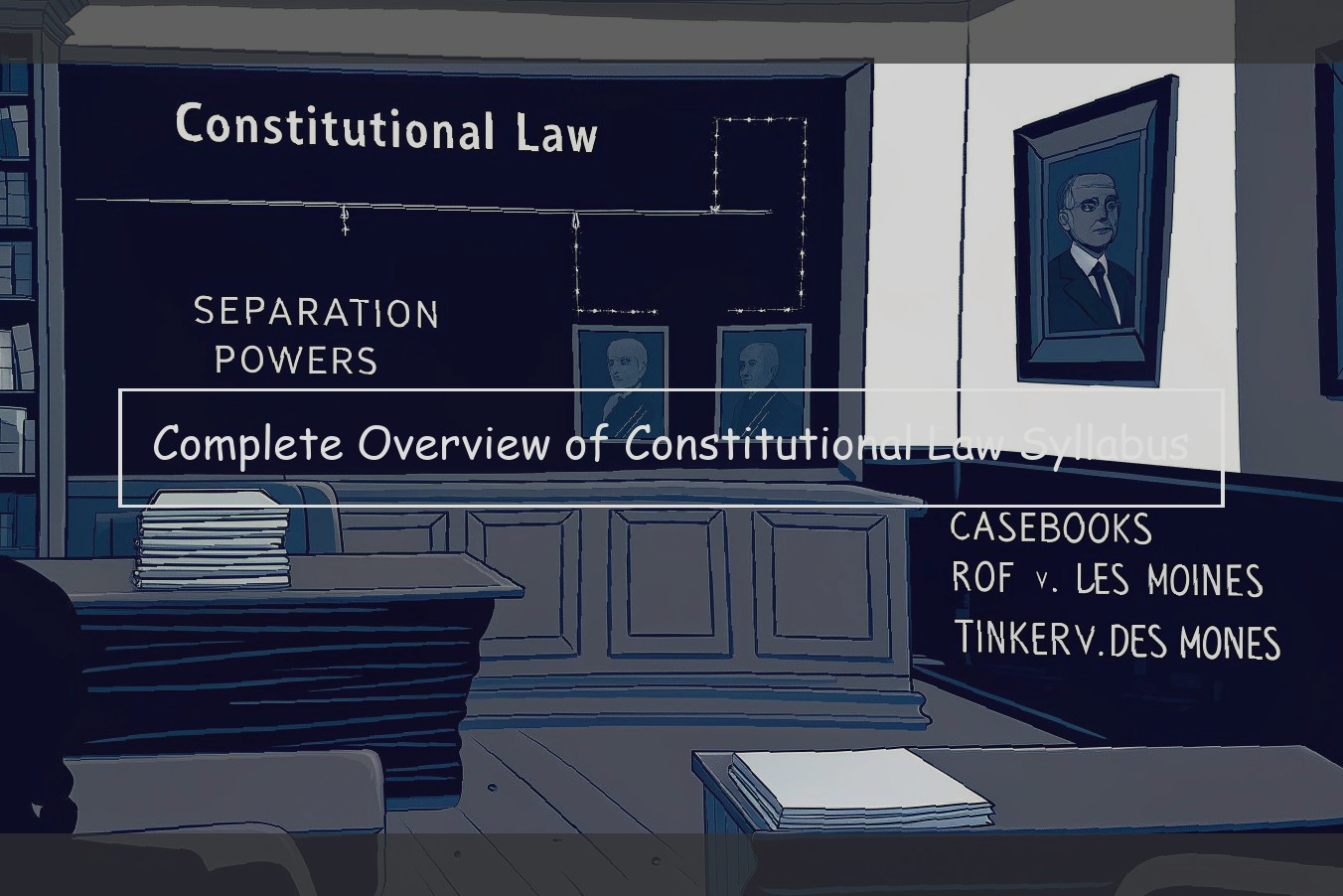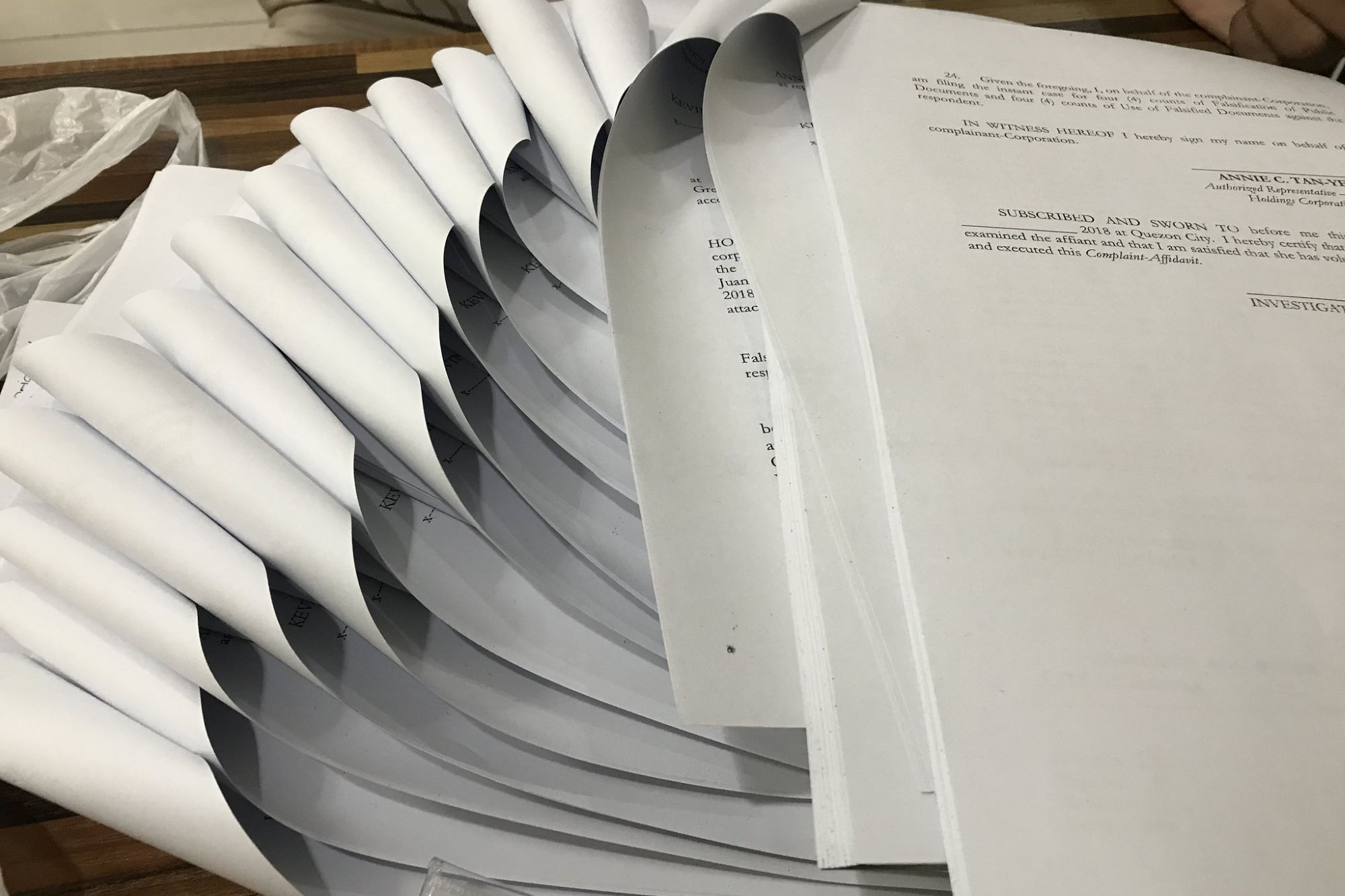
An Introduction to Constitutional Law
Constitutional law is the body of law that interprets and applies the Constitution, the document that sets forth the framework for the federal government of the United States, and the overall supreme law of the land. Through the Constitution, the legislature, executive and judicial branches created by the framers of the Constitution are established and the relationships between individual citizens, states and the federal government are defined. It is through Constitution law that the rule of law can be applied , giving each citizen rights and freedoms, but identifying also, through the law, restrictions for conduct that could result in significant penalties. Constitutional law deals with the vital relationship between those individual citizens and the law as it is balanced against the powers of the three branches. From the prohibition on ex post facto laws to the issue of whether Congress may regulate the health care industry, the Constitution and constitutional law are the backbone of the American legal system.
Syllabus Core Subjects
Having reviewed the exam structure in the previous section, let’s review the key topics that such a constitutional law syllabus is likely to cover. As noted above, this is often a survey course, which means it’s not necessarily possible to dive deeply into any particular topic or exploration.
However, the following outline can be used to ensure that you have covered all of the key topics that will be on the exam.
I. Structure of government
A. Separation of powers
- Checks and balances (e.g. presidential veto)
- Judicial review of executive and legislative power
- Federal vs. state power
II. Federalism
A. Division of power between federal and state governments
III. Bill of Rights
A. First Amendment (freedom of speech, press, assembly, petition and religion)
B. Economic rights (Takings clause, just compensation, due process, 4, 5, and 14 amendment issues)
C. Third part rights (parental rights, privacy among others)
IV. Individual rights
A. Right to vote
B. 2nd amendment
C. 8th amendment
D. 14th amendment
Again, keep in mind that question topics can jump around from year to year and may involve cases and/or issues covered outside of the core topics listed here. For example, while separation of powers might appear to be thoroughly covered, questions about the commandeering doctrine, the non-delegation doctrine, and the contempt power of the court may fall under this topic.
Landmark Case Studies
Constitutional law courses frequently break down cases into significant summaries that are recognizable to students who are confronted with constitutional law. The Supreme Court cases dealing with First Amendment problems are leading examples of cases that are regularly examined, perhaps because recent students of the Constitution are familiar with the topics. The following list of examples does not reflect any sort of ranking, these cases just tend to come up. The cases of Tinker v. Des Moines Independent Community School District, 393 U.S. 503 (1969), and Bethel School District No. 403 v. Fraser, 478 U.S. 675 (1986), illustrate two contrasting sides of speech. Tinker rejected schools’ abilities to control student speech unless that speech presents a substantial disruption. The court noted that neither party was even aware of that disruption referenced as causing the school to take action. Bethel, on the other hand, found content -or what the court deemed to be the vulgarity of the speech- to indeed cause reasonable justification for curtailing unfettered speech. Bethel, like the Tinker case, involved a school. The findings in Roe v. Wade, 410 U.S. 113 (1973), is another example that comes up. The case determined that the right to privacy offered by the 14th amendment of the Constitution included up to the point of viability the right to make private medical decisions. The classic example is the First Amendment Free Speech Clause. Cases such as Gitlow v. New York, 268 U.S. 652 (1925), Whitney v. California, 274 U.S. 357 (1927), and Schenk v. United States, 249 U.S. 47 (1919). These cases dealt with various examples of the clear and present danger test, as well as incitement. Establishment Clause cases that are also frequent topic examples include Lemon v. Kurtzman, 403 U.S. 602 (1971), and Engel v. Vitale, 370 U.S. 421 (1962). The first case exemplified the Supreme Court’s standard of review to determine whether the law in question was unconstitutionally entangled with the church. In finding that the law in the case did nothing to further or serve a secular purpose the court found that it did indeed violate the establishment clause. The second case is also a classic example of an establishment clause case. It found that a voluntary prayer by the state at the start of the school day did indeed violate the establishment clause.
Teaching Approaches
One of the most critical functions of a constitutional law class, from the professor’s perspective, is to make clear to students how a complex array of legal rules, procedures, and doctrines all fit together. The overarching theme of a comprehensive constitutional law syllabus is to unify our disparate notions of liberty and equality under the rule of law. Our course methods reflect this goal.
Often when we think about constitutional law, we conceptualize it as the law of the Supreme Court. And while the role of the judiciary in the constitutional process is significant, we believe that constitutional law is best taught as a collection of interrelated processes. Thus, we take a broad-strokes approach in our courses. Constitutional law requires students to understand many complicated and abstract questions of law and policy, but these questions do not occur in a vacuum. Rather, they should be understood as part of the larger constitutional decision-making process by which ideas for the regulation of society enter the system.
Laws are but a part of the overall process. They result from substantive debates on the merits of policy ideas, and they grow out of political struggles that seek to define our conception of liberty and equality in our constitutional democracy. Thus, by delving into the various ways that constitutional laws are adopted, we can place them in a broader context that illuminates their construction, maintenance, and value.
Our students thus learn to recognize the coarse edges of their reading. The imperfect personality of the judicial branch makes the machinations of the Supreme Court anything but predictable. Lawmaking, on the other hand, is a process that is better understood through the help of a good flow chart. But, put them together, and our students can start to see how different branches of American government wrestled with the same problem from opposing perspectives. In fact, the dissonance between the courts and the legislature highlights the fact that adopting a legal rule involves multiple players acting for a multitude of reasons.
Our class materials—casebooks and reader—guide students through a set of pedagogical puzzles designed to emphasize these connected processes . Case books provide standard legal cases that are clearly organized and grouped into coherent chapters focusing on specific areas of constitutional law such as "Judicial Review" or "Landmark Freedom of Religion Cases." By design, cases are edited down to lower court opinions and portions of Supreme Court opinions. Thus, the complexity of evaluating the judicial decision-making process is stripped away, and the focus is placed on the actual opinion. Selections are organized to try and provide a coherent view of controversial directions. There are materials annotated with teaching notes and summaries that provide additional context. For example, multi-page briefs give a sense of the state and national interests present in important cases. Coverage also includes informative background readings that give our students insight into the political and social dimensions of the constitutional process.
Other supplemental readers focus on current political events that are particularly relevant to recent jurisprudence. These packets of newspaper and magazine clippings expose students to a range of information from newsgroups, trade unions, and other public organizations. Providing this information to students helps them understand what is at stake in each case and how it is viewed by the outside world. Next, we supplement these cases with lectures that, as necessary, weave in the theoretical approaches discussed in our readings.
Finally, we encourage student discussion that invites out-of-class engagement. These discussions provide students with the chance to practice their advocacy before, during and at the conclusion of class. For instance, in our final class, we seek to create a mock debate in which students can argue their positions on particular policy issues.
Our understanding of the Constitution, and the process by which it is made, is best understood in context. Thus, throughout our constitutional law courses we employ a variety of teaching methodologies that together provide the tools for students to recognize how different processes work, interact, and ultimately contribute to our rule of law.
Additional Resources
There are other resources which can be called useful, in conjunction with the textbook and casebook. These include journals, online databases, research guides, as well as book publishers, which we will discuss below.
Harvard is one of the leading American universities which have on offer a great constitutional law syllabi or reading list. For those of you who like to search the web while studying, you may wish to check out their reading list on constitutional law, both for graduate studies or undergraduates.
Other law schools have also produced reading lists. One such law school is The George Washington University, which has reading lists for US Federal Law, US Supreme Court, US Constitutional History, and The American Constitution. The Stanford Law Review provides reading lists and links to other legal resources. The William G. McLauchlan – A Document Research and Access Web site is provided as an aid to those doing research on the issues of power in the Australian Constitution.
In addition to legislative and Australian history and government information, the site includes information about important ‘when and why’ events, significant cases and commentaries relevant to events listed in the Australian Constitution.
A research guide produced by the Law Librarianship Division of the American Library Association, which covers topics relating to US Constitutional law and Government. The guide provides a number of resources including reference books, databases, journals, websites, among others, for the researcher of US Constitutional law.
The Constitution Society promotes the study of the UK constitution. The Constitution Society has a number of research papers on a range of topics, including the United Kingdom’s "uncodified" constitution, the British Monarchy, the Northern Ireland "status question," and Brexit.
The Constitution Society also provides a wide ranging selection of online courses on constitutional law. The online courses may also be adapted by educators for use in classes, seminars and other gatherings. Each of these online courses can contain self-test quizzes, reading lists, streaming video lectures, glossaries and discussion forums.
Oxford University produces Core and Supplementary reading lists for undergraduate, postgraduate and research students studying law at the university. The reading lists are made available for perusal by the public, as a means of showcasing the quality of legal teaching and research at the university. The lists cover each area of law taught at the university.
The Institute on the Supreme Court of the United States offers a wide variety of resources, as a means of furthering the understanding of how the court works and its role in the US system of government. Resources on offer include reports, research papers, webinars, videos, podcasts and audio-visual content covering the work of the US Supreme Court.
Examinations and Grading
In assessing the students’ understanding of the law, most professors apply a variety of assessment techniques to ensure that students understand more than just the law they studied. This may take the form of exams, essays or even a comprehensive moot court exercise. Some professors may use one particular formulation, whereas others might choose to merge and adapt techniques to better assess students on more particular aspects of the syllabus. No matter what type of assessment is chosen, there are common aspects that professors generally look for from their students research, performance and presentation.
Research
The student must be able to prove that they can find, read and analyze constitutional law relating to the assessment technique that they are given. A student must be able to research the law, as well as fair comment on the status of the law and position in relation to the research. They will be expected to find and read academic literature and then critically analyze that literature.
Essay Style Assessment
Essay style assessments may be intentionally broad, with students being asked as to comment on a specific aspect of the law. They may be asked to comment in general terms on a particular topic, or be given a proposition and asked to expound critical analysis on the subject. In this context, depth of research is essential as well as the relevance of the material that is recounted. The law must be applied effectively and students must have a good grasp of the topic. Students should be sure to cross reference their textual materials with academic literature. A structured, succinct and relevant conclusion is essential .
Exam Style Assessment
Many professors opt for exam style assessments as it can encourage students to expand their knowledge of the syllabus as well as requiring them to know various facets of the law. In this context, penniless students need to be able to read and understand the question that they have been given in order to properly respond with a structured and nuanced answer. The most effective examinations are often those that have been effectively prepared for and made available to students during previous classes. In addition, exam questions may be based on substantive issues raised in class, with students being asked to comment on those issues. These issues may be hypothetical, or may draw from previous lecture notes. Thorough revision of lecture notes with a view to understanding the deeper implications of the question are essential to achieving a high mark in exam style assessments.
Moot Court Assessment
Moot Court exercises can take many forms, including structured court hearings with judicial panels, or more informal approaches such as appearances before panels of academics or actual practicing lawyers. Either way, preparation is essential to any successful moot court. Typically, speakers will be given time limits, so it is important that they ensure that their speeches are well prepared and of the appropriate length. Judges will often ask questions and it is vital that competitors can respond adequately to these questions. Any evidence to support the assertions advanced in speeches must be presented. A valid structure to each presentation is required. This will include thorough references to the authorities applied. The skill of speaking effectively while present are essential. As such, prospective mooting students must allocate time and effort to prepare themselves accordingly.



